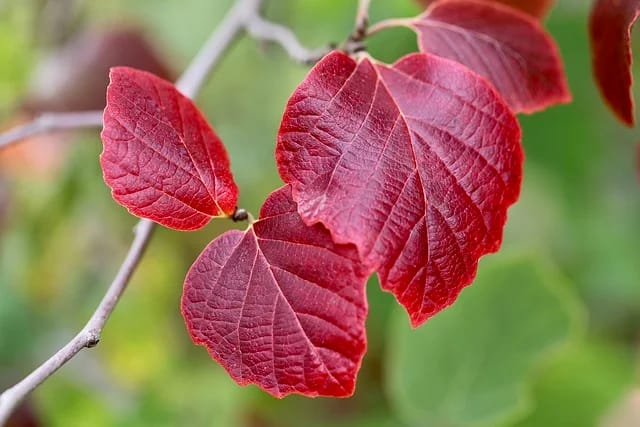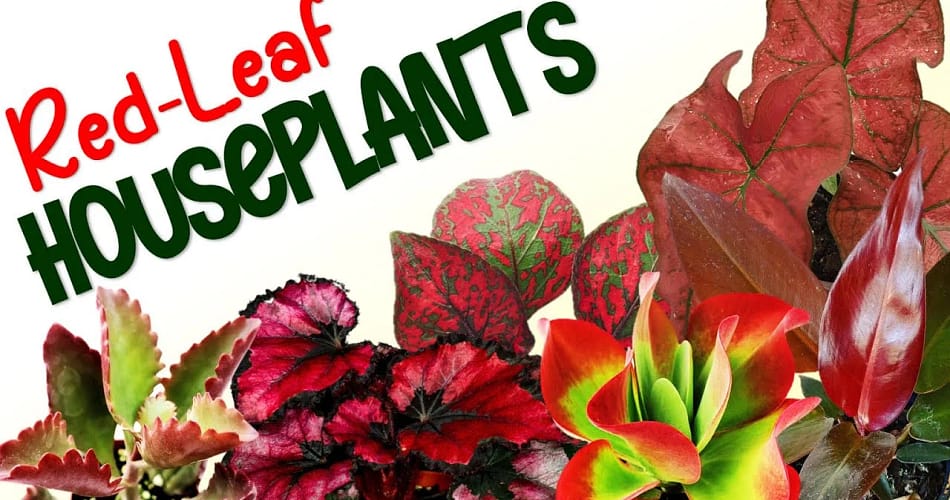Introduction to Red Leaf Plants
Red leaf plants are a stunning addition to any garden or indoor space, providing vibrant color and contrast against the greenery. These plants are not only visually appealing but also relatively easy to care for. In this guide, we’ll explore various types of red leaf plants, their care requirements, and how you can use them to enhance your living space.
Why Choose Red Leaf Plants?
Red leaf plants offer a bold statement in any garden or indoor setting. Their vibrant color adds depth and contrast, making them ideal for creating focal points or complementing other plants. Additionally, many red leaf plants are low-maintenance, making them suitable for gardeners of all levels.
Types of Red Leaf Plants
There is a wide variety of red leaf plants to choose from, each with its unique characteristics. Some popular types include:
- Coleus: Known for its vibrant, multicolored leaves that often feature a mix of red, pink, and green.
- Japanese Maple (Acer palmatum): A tree with delicate, lacy red leaves, perfect for adding elegance to any garden.
- Red Aglaonema: A low-maintenance indoor plant with striking red and green leaves.
- Cordyline: Features long, spiky red leaves that add a tropical feel to your space.
- Heuchera (Coral Bells): Offers a variety of red shades, from deep burgundy to bright cherry red.
Know More About Japanese Maple (Acer palmatum) Click Here : Japanese Maple (Acer palmatum) Indoor Plant
Climate and Soil Requirements for Red Leaf Plants
Most red leaf plants thrive in well-drained soil with a pH level between 6.0 and 7.0. The climate requirements vary depending on the type, but generally, these plants prefer mild to warm climates with plenty of sunlight to maintain their vibrant color.
How to Plant Red Leaf Plants
Planting red leaf plants requires some attention to detail to ensure they thrive:
- Choose the Right Location: Select a spot with adequate sunlight, as most red leaf plants need bright light to maintain their color.
- Prepare the Soil: Ensure the soil is well-draining and enriched with organic matter.
- Planting: Dig a hole slightly larger than the root ball, place the plant in the hole, and backfill with soil. Water thoroughly after planting.
Watering and Fertilizing Red Leaf Plants
- Watering: Most red leaf plants prefer consistent moisture but be careful not to overwater, as this can lead to root rot.
- Fertilizing: Use a balanced, slow-release fertilizer during the growing season to promote healthy growth and vibrant foliage.
Pruning and Maintenance of Red Leaf Plants
Regular maintenance helps keep your red leaf plants healthy and looking their best:
- Pruning: Remove any dead or damaged leaves to encourage new growth and maintain the plant’s shape.
- Cleaning: Wipe down the leaves occasionally to remove dust and enhance their vibrant color.
- Re-potting: For indoor red leaf plants, re-pot every 1-2 years to refresh the soil and give the roots more space.
Pest and Disease Management
Red leaf plants can be susceptible to pests and diseases like aphids, spider mites, and powdery mildew. Regularly inspect your plants and treat any issues promptly with organic or chemical solutions.

Know More About October Glory Maple Tree Click Here : October Glory Maple Tree
Best Companion Plants for Red Leaf Plants
Pairing red leaf plants with other plants can create a stunning visual display:
- Green or Silver Foliage Plants: Contrast the red leaves with plants like hostas or dusty miller.
- Flowering Plants: Combine with flowering plants that have complementary colors, like white or yellow blooms.
- Ornamental Grasses: Use grasses with neutral tones to highlight the vibrant red leaves.
Indoor vs. Outdoor Red Leaf Plants
Red leaf plants can thrive both indoors and outdoors, depending on the species:
- Indoor Plants: Red Aglaonema and Coleus are popular choices for indoor gardening, adding a splash of color to your home.
- Outdoor Plants: Japanese Maple and Heuchera are ideal for outdoor gardens, providing year-round color.
Popular Varieties of Red Leaf Plants
Some popular red leaf plant varieties include:
- Burgundy Rubber Plant (Ficus elastica ‘Burgundy’): A striking indoor plant with deep red leaves.
- Bloodleaf (Iresine herbstii): Known for its bright, almost neon-red foliage.
- Red-Leafed Banana (Ensete ventricosum ‘Maurelii’): A tropical plant with large, reddish-brown leaves.
Design Ideas Using Red Leaf Plants
Incorporating red leaf plants into your landscape or home decor can create a striking visual impact:
- Garden Borders: Use red leaf plants along garden borders to create a vibrant edge.
- Accent Plants: Place them in strategic spots to draw attention to specific areas of your garden or home.
- Containers: Grow red leaf plants in decorative pots to bring color to patios or indoor spaces.
Benefits of Red Leaf Plants
In addition to their visual appeal, red leaf plants offer several benefits:
- Air Purification: Many indoor red leaf plants help improve air quality by filtering toxins.
- Low Maintenance: Most red leaf plants are easy to care for, making them ideal for busy individuals.
- Versatility: They can be used in various settings, from formal gardens to modern interiors.
Seasonal Care Tips for Red Leaf Plants
Caring for red leaf plants throughout the year ensures they stay healthy and vibrant:
- Spring: Fertilize and start regular watering as new growth appears.
- Summer: Ensure they get enough water and protect them from intense midday sun.
- Fall: Prune as needed and reduce watering as the plants prepare for dormancy.
- Winter: Move indoor plants away from cold drafts and reduce watering.
Common Problems and Solutions
Even with the best care, red leaf plants may encounter some issues:
- Faded Leaves: Ensure the plant is getting enough sunlight; insufficient light can cause the red color to fade.
- Leaf Drop: This can be caused by overwatering or sudden changes in temperature. Adjust watering habits and ensure the plant is in a stable environment.
- Pest Infestations: Regularly inspect for pests and treat with appropriate solutions as needed.
How to Propagate Red Leaf Plants
Propagating red leaf plants is a great way to expand your collection:
- Stem Cuttings: Take a cutting from a healthy plant, remove the lower leaves, and place it in water or moist soil until roots develop.
- Division: Some plants, like Heuchera, can be divided at the root to create new plants.
Fun Facts About Red Leaf Plants
- Natural Pigment: The red color in these plants comes from anthocyanins, pigments that also provide health benefits when found in foods like berries.
- Cultural Significance: In some cultures, red leaf plants are believed to bring good luck and prosperity.
- Pollinator Attraction: The vibrant color of red leaf plants can attract pollinators like bees and butterflies to your garden.
How to Choose the Right Red Leaf Plant for Your Space
Consider the following when selecting a red leaf plant:
- Light Requirements: Choose a plant that matches the light conditions of your space.
- Size: Ensure the plant’s mature size fits the area where you plan to place it.
- Care Level: Pick a plant that matches your gardening experience and time commitment.
Where to Buy Red Leaf Plants
You can purchase red leaf plants from local nurseries, garden centers, or online retailers. Be sure to choose healthy, pest-free plants and consider the shipping conditions if ordering online.
FAQs about Red Leaf Plants
1. Can red leaf plants tolerate full sun? Some red leaf plants can tolerate full sun, but most prefer partial shade to maintain their vibrant color.
2. How often should I water red leaf plants? Watering frequency depends on the specific plant and environment, but generally, they prefer consistent moisture without being waterlogged.
3. Are red leaf plants toxic to pets? Some red leaf plants, like the Red Aglaonema, can be toxic to pets. Always check the toxicity of a plant before bringing it into a home with pets.
4. Can red leaf plants be grown indoors? Yes, many red leaf plants thrive indoors, provided they have sufficient light and proper care.
5. What causes red leaves to turn green? If red leaf plants receive too little light, their leaves may turn green as they adapt to the lower light conditions.
6. How can I enhance the red color of my plants? Ensure they receive adequate light and avoid over-fertilizing, which can lead to excessive green growth.
7. Do red leaf plants need special soil? While they don’t need special soil, red leaf plants do best in well-draining, nutrient-rich soil.
8. How do I prevent pests on my red leaf plants? Regularly inspect your plants, maintain proper spacing for air circulation, and use natural pest repellents like neem oil.
9. Can I propagate red leaf plants from seeds? Yes, but keep in mind that propagation from seeds can take longer and may not always result in plants with the same vibrant red color.
10. What is the best fertilizer for red leaf plants? A balanced, slow-release fertilizer is ideal for most red leaf plants, providing the necessary nutrients without overloading them.

